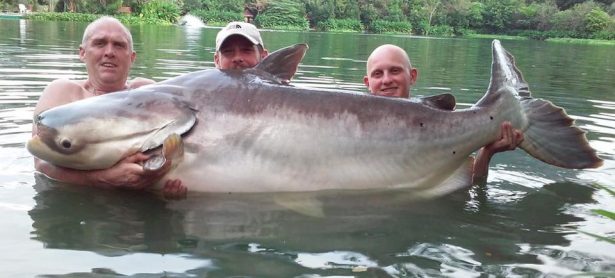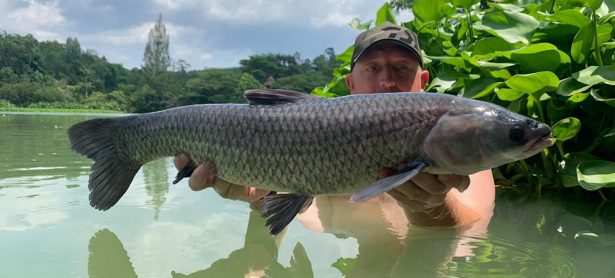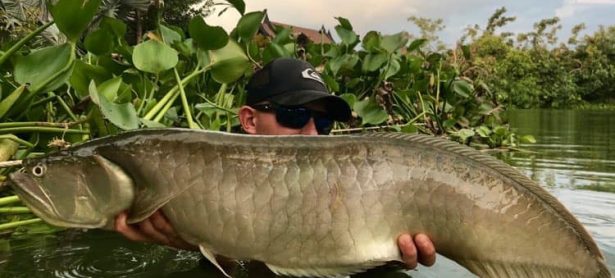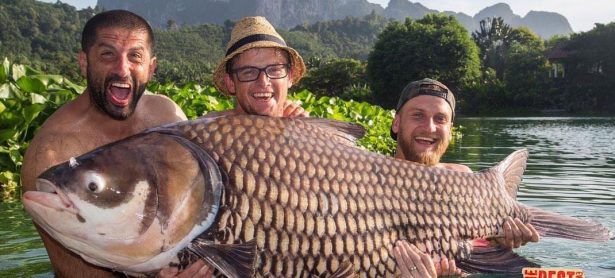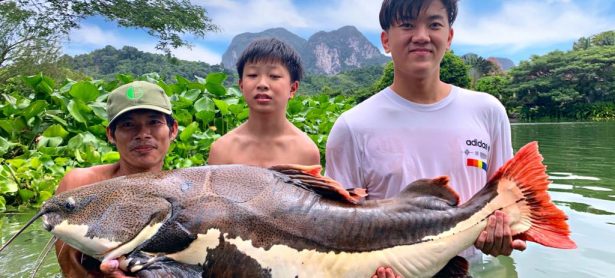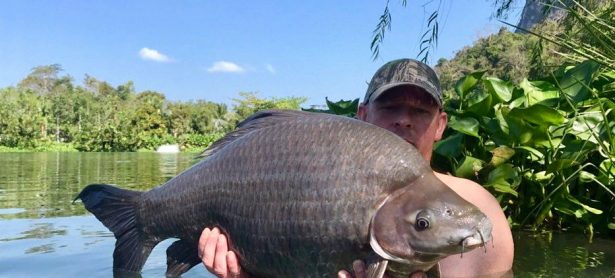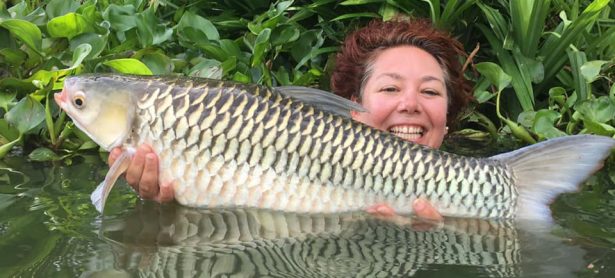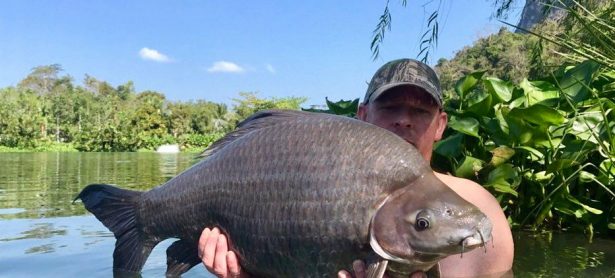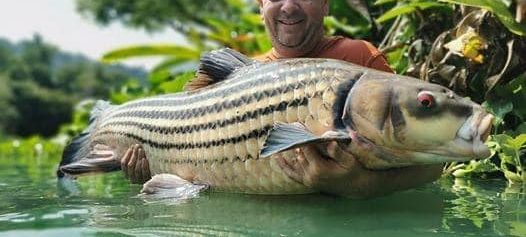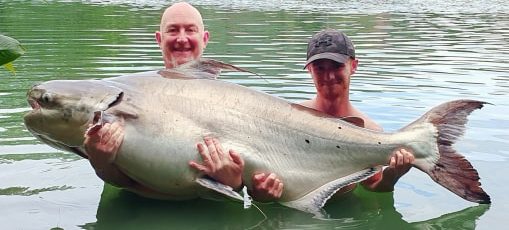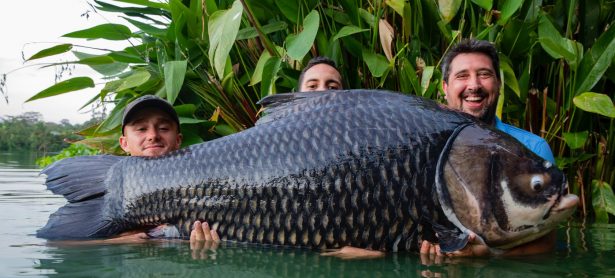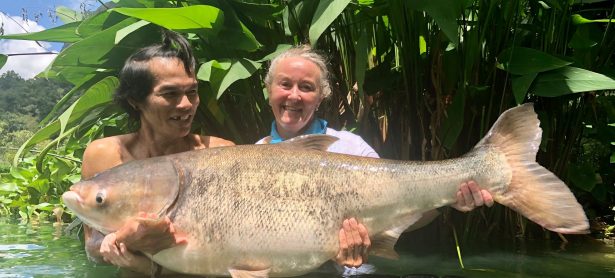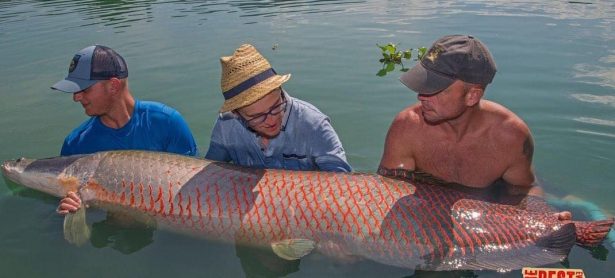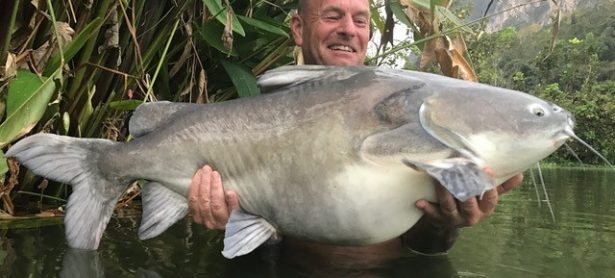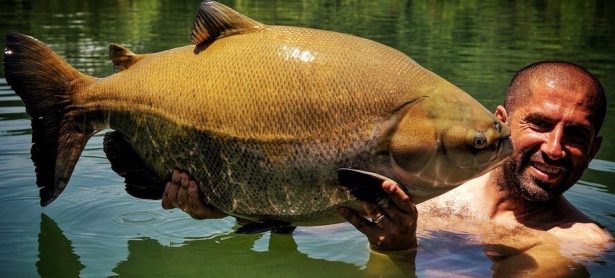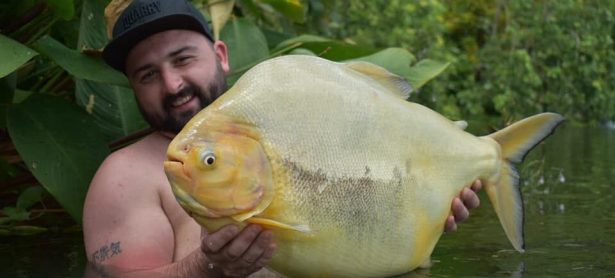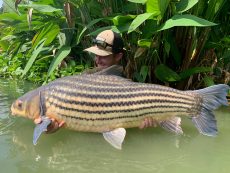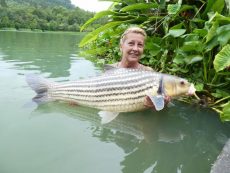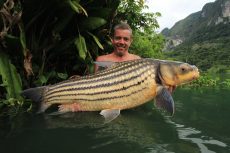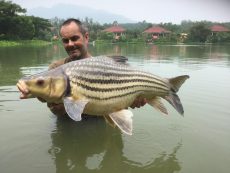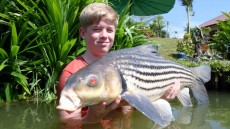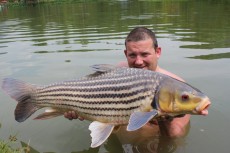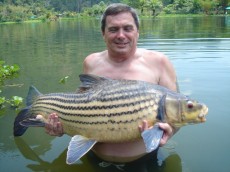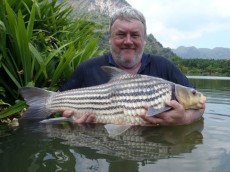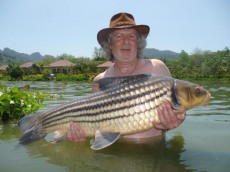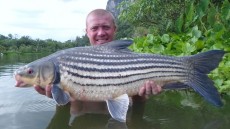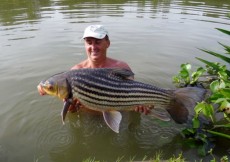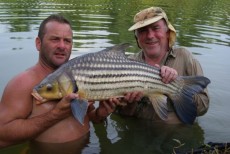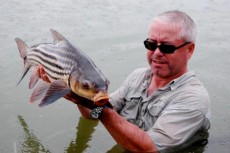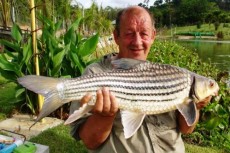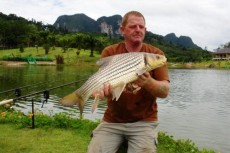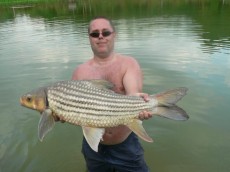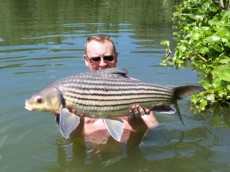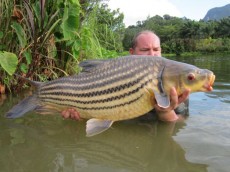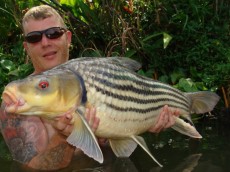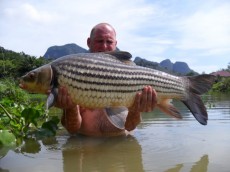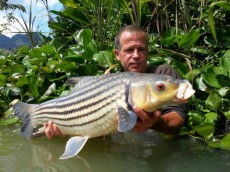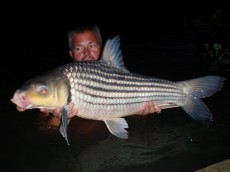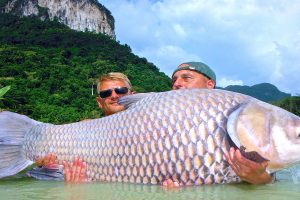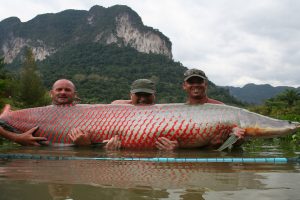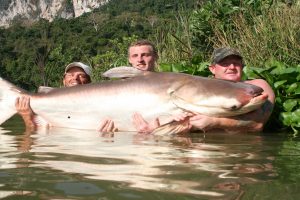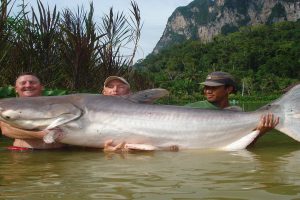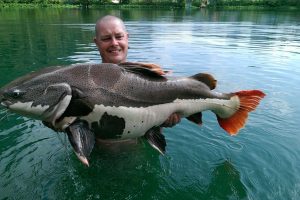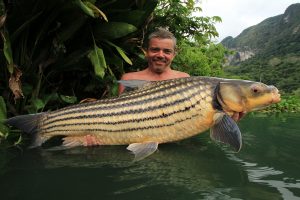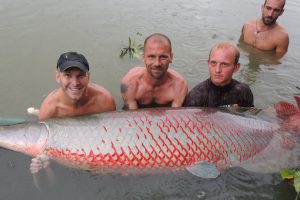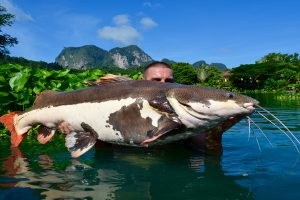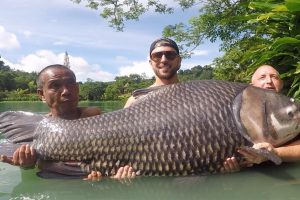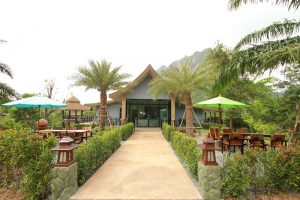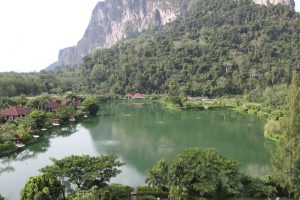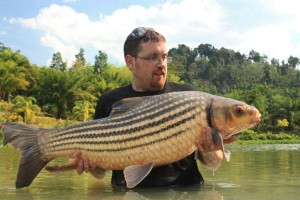 Name: Julian’s golden carp
Name: Julian’s golden carp
Species: Probarbus Jullieni.
Thai name: Pla yissok.
Max length: 2m.
Max weight: 70kg.
IGFA record: Vacant.
Diet: Aquatic plants, Insects, shellfish, prawns, maize, pellet, boilies, sticky rice.
To fish for our Julian’s golden carp we recommend you plumb the depth of your intended swim, find a depth of around 4 meter, feed maize with small pellet, and if you are staying a few days feed the swim up over two or three days. Fish a light lead or float with maize and pellet scattered around, maize is the no1 bait here at Gillhams, but a close second is fruit flavored pop-ups. For even better results try moulding some sticky rice around your hook link, and then pulling your hair rigged pop-up into the rice ball. This method makes a deadly combination of a pop-up sitting over a small patch of rice.
As with all the non-predatory fish in our lake, you need to create your own feeding area, and the tighter your feeding pattern the more fish you will concentrate in one area. The Julian’s golden prize is a bottom feeder which has an underslung mouth with protruding lips, very similar to the European barbel. They rummage around the lakebed searching for food, and a giveaway to location in still conditions is look for pinprick clouds of bubbles breaking the surface. They are a shoal fish so once you have a shoal feeding keep the feed going in to hold them in your fishing area. They are very easily spooked, so when one is hooked let them run out of your baited area before playing them in. They are a very hard fighting fish for their size, and often fool you into thinking they are bigger than they are when they go on long, hard runs.
Be prepared for some unusual antics from these hardy carp; they often jump when hooked, and even when you think the fight is over be prepared for them to jump from the landing net. When targeting these fish you will also catch Siamese carp, plus all our other carp species, along with the Mekong catfish. A lot of our anglers use one rod with maize on their baited area, and then fish with a fish bait on the outside edge of the baited area for predators who have come into the food zone attracted by the small bait fish feeding on the groundbait. There are no real concerns with these tough carp species, and they require no special care, but as with all our fish please handle with care, use barbless hooks only and only photograph in the water with a quick release.
General facts on Julian’s golden prize carp:
This stunning looking carp is regarded by many as the prettiest of all carp species, hence their name. They really are a golden prize with their golden brown scales, and vivid black lines running the full length of their bodies with black and red tipped fins. Their natural habitat is slow moving large rivers and they prefer sandy or gravel areas of the riverbed where they feed on molluscs and shrimp. The Julian’s golden prize is not a lake dweller; they exist in lakes due to man stocking them, where in fact they thrive. They do not spawn in still water but are known to go through the motions of spawning.
In the wild they spawn in late December through to February depending on non-flood conditions with a constant temperature of 23C for several days, and their eggs hatch 36 hours after being laid. In the past they have been recorded at weights in excess of 70kg (150lb) but wild fish nowadays rarely exceed 20kg (45lbs), their downfall being their high market price due to their fine eating qualities. The Thais actually prefer to eat them raw or lightly steamed. They are farmed throughout Thailand as a food source where there local name is pla yissok. The ideal table fish at the quickest attainable weight is 5kg (11lb), hence the shortage of good sized fish available to commercial fisheries.



